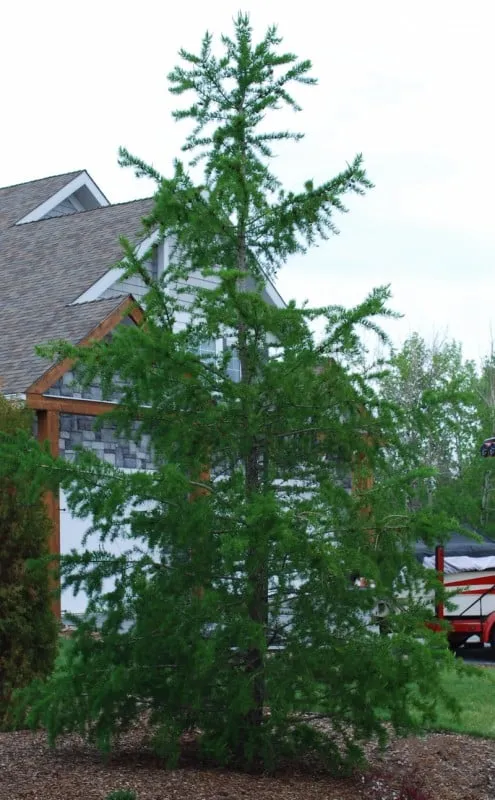The Siberian Larch is known for its slender, upright growth habit and its delicate, soft needles. Its needles are light green in spring and summer, turning golden-yellow before dropping in the fall, creating a stunning display of autumn color. The bark of young trees is smooth and gray, becoming rougher and more furrowed with age.
This tree produces small, egg-shaped cones that mature in the fall and release their seeds during the winter months.
- Size: Siberian Larch trees can vary in size depending on growing conditions, but they typically reach heights of 50 to 80ft and have a spread of 20 to 35ft at maturity. It is a relatively fast-growing tree, especially when young, and can put on several feet of growth per year under optimal conditions.
- Location: Siberian Larch prefers full sun and well-drained soil. It can tolerate a wide range of soil types, including sandy, loamy, and even clay soils, as long as they are well-drained.
- Watering: Newly planted trees should be watered regularly to help establish their root systems. Once established, Siberian Larch is fairly drought-tolerant but will benefit from occasional watering during prolonged dry periods.
- Pruning: Pruning is generally not required for Siberian Larch, but you can remove any dead or damaged branches as needed. Avoid heavy pruning, as this can affect the tree's natural shape and appearance.
- Fertilizing: Siberian Larch typically does not require fertilization if planted in nutrient-rich soil. However, if growth appears stunted or the foliage is pale, you can apply a balanced fertilizer in early spring.
- Mulching: Applying a layer of mulch around the base of the tree can help retain soil moisture and suppress weeds. Just be sure to keep the mulch several inches away from the trunk to prevent moisture-related issues.













